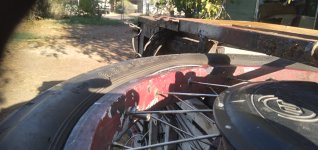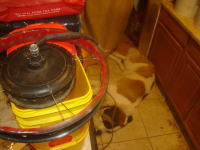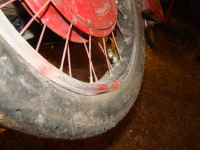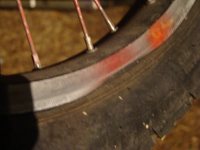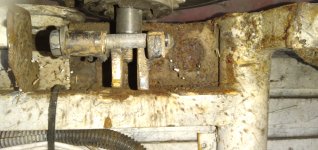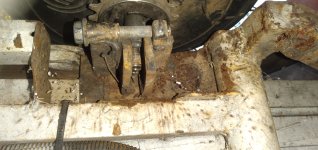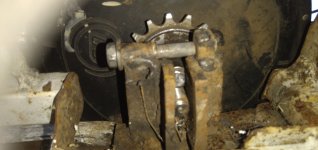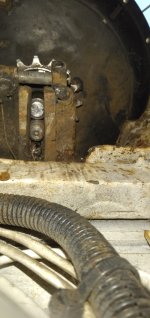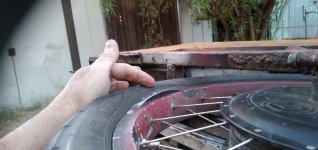Incidental yes. Now imagine the horror situation where you just made an emergency stop because some moron stepped right in front of you without looking left or right... so your brakes are already 'to hot to touch'.
I use the solution of not riding close enough to others, and carefully watching everyone else around me, for this kind of thing to be much of an issue.

Plus, me being required by law to be at half or less the speed everyone else is going means it is highly unlikely for this situation to occur.
Next incident might result in a peak temp where you weld your pad stuck again and rip it up again ( or something ). And you now had enough braking ability left to not ever make that seem like an issue, but that's mostly due to the break pattern leaving a lot of flat contact area.
Well, the pad hasn't welded to the rotor. Just a tiny bit of the spring clip that based on spacing, angles, pad wear, etc., of the pads that it was on there with, should not have even been able to touch the rotor, so something else had to happen to bend the clip to touch the rotor first, like a bit of road debris or something, I would guess.
At least skidding you have some control with modulation ( you should really load that wheel more, or move braking force to the back ( but you know this, and I'm preaching to the choir )).
Once the wheel skids, it's not controlled anymore, unless I release the braking enough to roll again, and then apply force enough to brake but not skid...either way if more stopping power is needed, it's not available once the wheel begins to skid, no matter what you do with modulation or control.
Needs more traction for that to happen, and as you say the options are more loading on the front wheel and/or brakes on the back.
I have drawn up ways to move significant weight to the front but it requires signficant changes to the structure and steering controls. Tiller is no longer possible, and it requires remote steering like CrazyBike2 had, because the only "good" way to move the weight up there is to move the battery compartment up there (would probably put 45lbs or more up there depending on how much material was required for the compartment and structure, including the battery itself). The battery is large flat cells, and could be split into two halves or four quarters easily enough, but it has to sit up fairly high becuase it must clear my legs moving around on the pedals, so it would interfere with the steering tiller. It can't go very far forward or it interferes with the actual fork, and cant' go back far because of my legs and the handlebars, and it can't go very high up or it interferes with seeing the road. That basically leaves sticking them out to the sides from around the top portion of the triangle and tiller area (assuming remote steering), and that means a very strong structure (taht must also be waterproof) to ensure all the road imperfections (holes, etc) don't shock-load the outer unsupported spans enough to break the battery boxes off.

So I abandoned the idea of doing that.
Panniers on the actual front fork or that are frame mounted and stick out above the front wheel and/or to it's sides, clearing all the steerable area, also require significant structural strength to prevent failure under any unavoidable road hazard impacts (which I'm good at avoiding, but there are always ones I can't due to traffic around me at that instant).
Only way around this is having a spare to take over transportation duties while you work on this one... again preaching to the choir more then likely )
I have a shed with a pile of parts to build into the Cloudwalker Cargo Bike (there is a thread for it), but Kirin and then Yogi died right about the time I was getting into that project, and nothing has been the same since (in Luke's words, I have a bad motivator). Since then, one thing or another (situations, health, money, etc) have all gotten in the way of doing that or any of the other major projects I have. If I won the lottery so I could just do these things and not use up all my energy at a dayjob, I could probably finish a bunch of things...but it gets less and less likely that I'll be able to do them all the time. :/ Too many dreams, too little time, energy, and money.
editL On a more serious note though, even while you have your regen braking as backup you also say that you're afraid to use them since your frame might get mangled up. That would result in unavoidable unplanned downtime. I mean. you can't plan for everything, but you can plan for some things.
I plan for lots of things, and some of them even work out as planned.

I don't think the frame will get mangled, but the axle on the motor could break, or more likely the excessive heating of the motor, controller, and cabling would cause a failure.
The braking on that wheel is not really regen, it actively fights the wheel rotation by providing current back to the motor in reverse of the direction it's trying to go, by using a function of the controller not intended for this purpose. This controller does not actually have regen or other ebraking, but it has an antitheft function that fights wheel rotation when turned on. So I wired that up to be engaged by the ebrake control system, and it makes an excellent brake...but not modulatable or adjustable. If it were used on a regular size/weight bike it would probably skid the wheel. :lol:
I even have a project that is about half done for replacing the controllers with ones that would certainly have enough braking and is modulatable, etc....but I haven't had the brain power to work on it when there was time, and not enough time when I had the brain power, so it's still sitting there.
:/
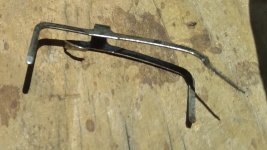 20230807_123448.jpg757.5 KB · Views: 2
20230807_123448.jpg757.5 KB · Views: 2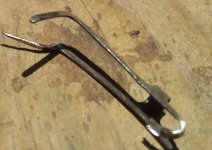 20230807_123554.jpg392.9 KB · Views: 2
20230807_123554.jpg392.9 KB · Views: 2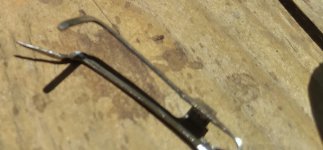 20230807_123550.jpg496.1 KB · Views: 2
20230807_123550.jpg496.1 KB · Views: 2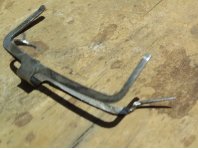 20230807_123540.jpg598.8 KB · Views: 1
20230807_123540.jpg598.8 KB · Views: 1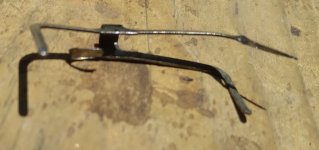 20230807_123526.jpg474.3 KB · Views: 1
20230807_123526.jpg474.3 KB · Views: 1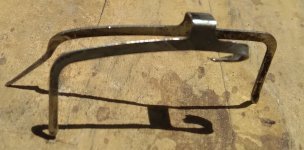 20230807_123517.jpg467 KB · Views: 2
20230807_123517.jpg467 KB · Views: 2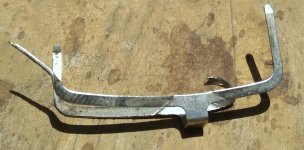 20230807_123512.jpg609.6 KB · Views: 2
20230807_123512.jpg609.6 KB · Views: 2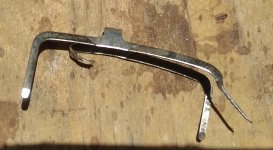 20230807_123505.jpg339.7 KB · Views: 2
20230807_123505.jpg339.7 KB · Views: 2





